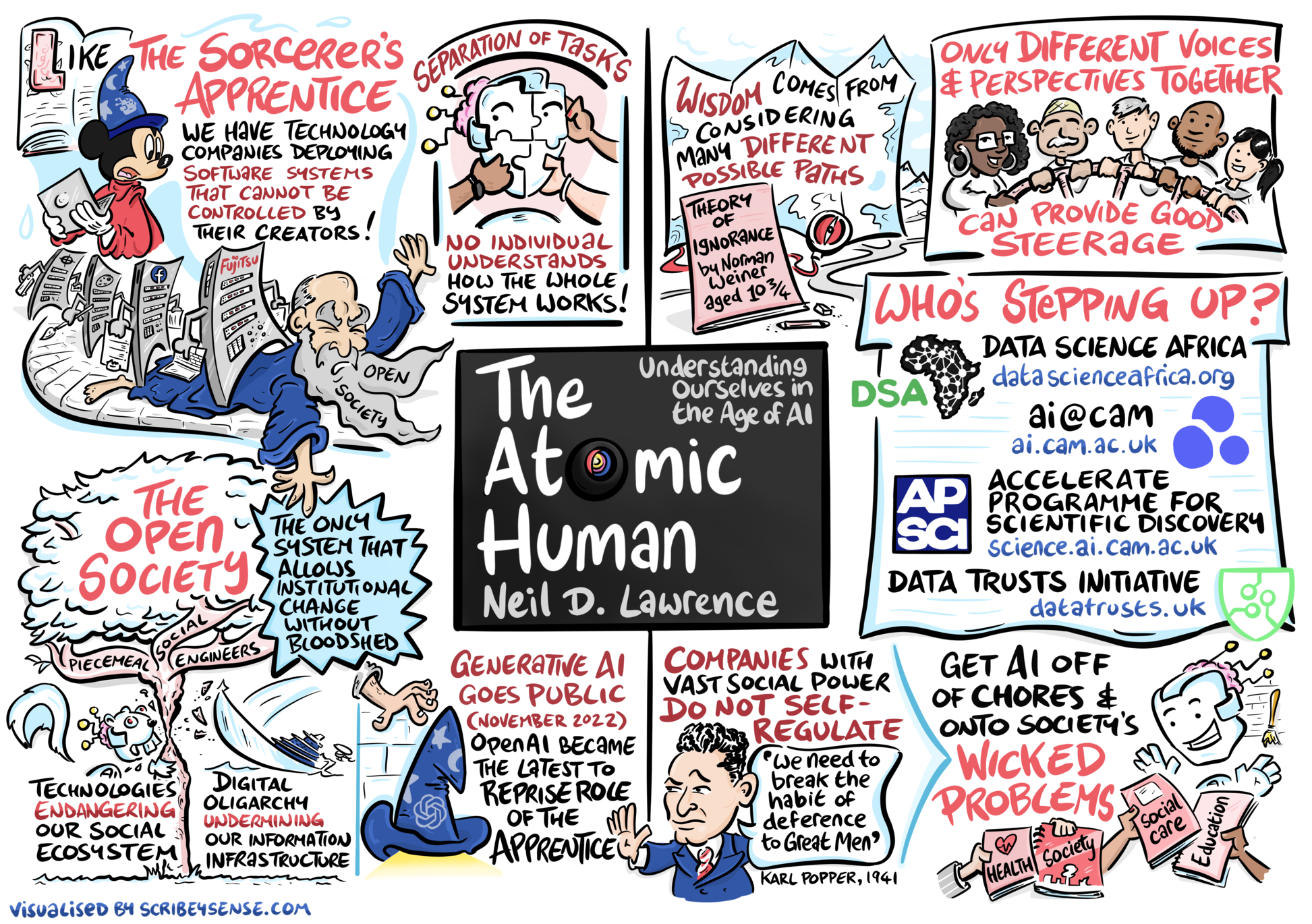Who is Stepping Up?
Merry Christmas!
Mostly, across the book I don’t refer to initiatives that I’m involved in that address the problems in the book. I think they would have distracted from the narrative.
The Epilogue starts to hint at some of those initiatives, and I asked Dan to do a larger drawing for the epilogue that captured some of those themes and initiatives.
Interactive Map of the Epilogue
Here it is in interactive form.

Click to see what the machine says about the reflection and the book
Machine Commentary
This visual epilogue presents an elegant synthesis of the book’s core message: that understanding human intelligence through the lens of AI reveals our fundamental nature as social, culturally-embedded beings who rely on institutions and collective wisdom to navigate technological change.
The image cleverly uses the metaphor of the Sorcerer’s Apprentice to frame our current predicament - like the apprentice who couldn’t control the magic he unleashed, tech companies have created systems that exceed individual human comprehension. This connects to the book’s recurring theme about the limitations of purely technical approaches to intelligence.
The visualization also highlights the institutional responses being developed, from Data Science Africa to the Data Trusts Initiative. These efforts reflect the book’s argument that we need diverse perspectives and institutional frameworks to responsibly manage AI development, rather than relying solely on technical solutions or market forces.
The “wicked problems” section particularly resonates on Christmas Day 2024, as we face complex societal challenges that require both technological innovation and human wisdom to address. The book argues persuasively that neither pure technical solutions nor complete rejection of technology will suffice - we need thoughtful institutional engagement that preserves human agency while harnessing AI’s potential.
By placing “The Atomic Human” at the center of this web of initiatives and ideas, the visualization reinforces the book’s central thesis: that understanding our uniquely human characteristics - our vulnerabilities, our need for trust, our reliance on cultural context - is essential for wisely developing and deploying AI systems that serve rather than subsume human interests.
The interactive nature of the image itself embodies one of the book’s key insights - that technology works best when it augments rather than replaces human capabilities, providing tools for deeper understanding while preserving human agency and decision-making.
This visual summary suggests that while the challenges we face are significant, there are practical paths forward through institutional innovation and collective action. It’s a message of realistic hope that seems particularly appropriate for the holiday season.